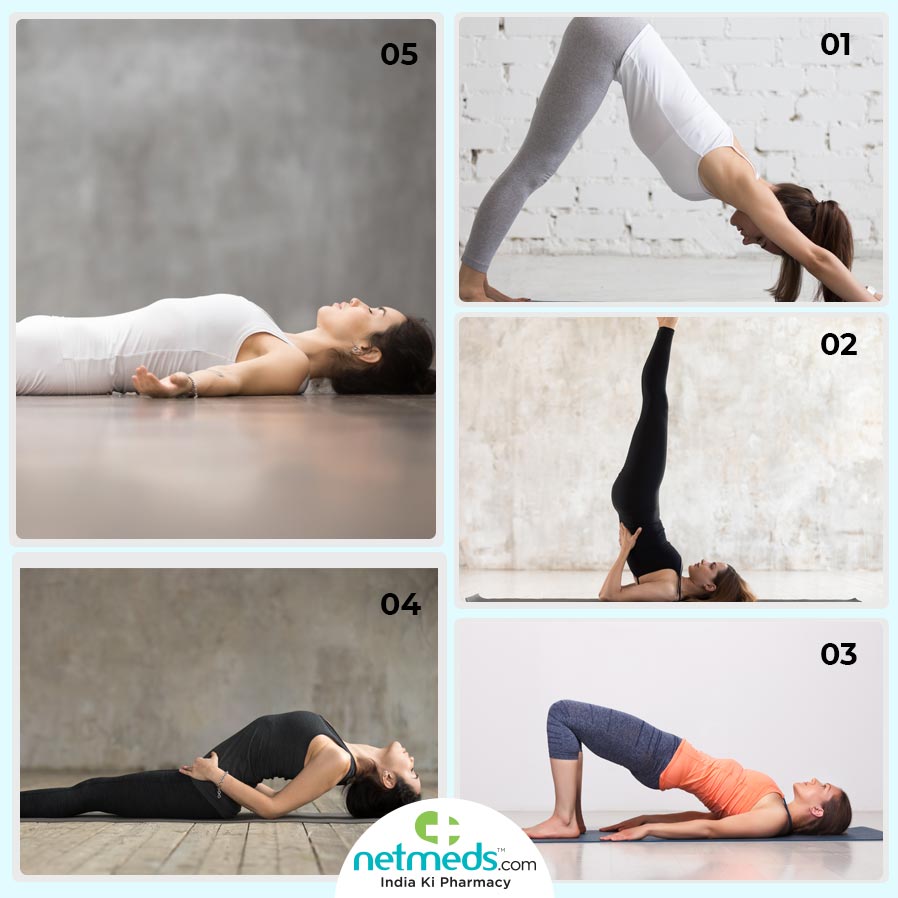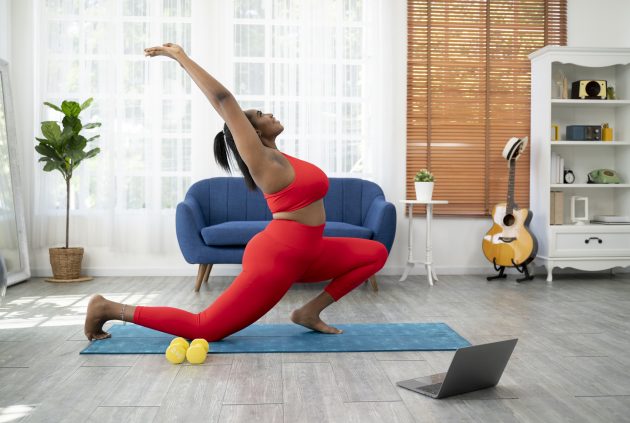
Yoga can be beneficial for diabetics. These benefits include improved balance and lower blood sugar. Yoga increases concentration, coordination and strength. Diabetes also affects the vestibular structures in the body, which regulate spatial perception and sense of balance. Diabetic patients who suffer from dysfunctional vestibular structures are at higher risk of falling.
Sun salutations
It is important to get warm before you start a yoga practice. Sun salutations are an excellent way to do that. These are fluid, dynamic movements that link the breath and the body. Sun Salutations should be performed at least four to eight times per day. There are also modifications that can be made to fit your particular physical needs. These modifications won’t make the postures any easier or more challenging. But they will help to train your muscles to move properly.
Yoga poses are a great way to lower blood sugar and insulin. These poses can also improve blood circulation and improve the function of the pancreas. For the greatest benefit, patients with diabetes should practice yoga at slow speeds.
Keep your legs up against the wall
The legs-up-the-wall yoga pose is beneficial to those with diabetes. It stimulates the body's internal organs such as the pancreas. You must be able to do the pose by lying down on a wall, with a folded towel beneath your head. Your arms should extend in front of your body.

Diabetes is a serious condition, and it requires a lot of effort to manage. The chronic condition can lead you to high blood pressure, excessive urine, and other issues. Experts recommend a variety of diet and physical strategies to manage the condition. Yoga has recently been recognized as a powerful tool to fight this disease.
Bhastrika pranayama
Bhastrika pranayama, which is a powerful way to manage blood sugar levels and blood pressure, can be done effectively. It affects the parasympathetic nerve system which increases cardiovascular health and stimulates insulin production from the pancreas. It is also effective for weight loss.
Bhastrika pranayama is a type of deep inhalation and forceful exhalation. This breathing exercise is particularly beneficial for people whose body composition is primarily water or Kapha. It's similar to yoga breathing except it is done through your chest. It engages the lungs and stimulates the heart and brain.
Lowering blood sugar levels
Studies have shown that yoga has numerous health benefits. This includes lowering blood sugar. Yoga has been shown in studies to help with weight loss, anxiety reduction, flexibility, and stress management. Although some may question the effectiveness of yoga as a diabetes treatment, it helps to manage blood sugar levels and is an effective way to stay active. This gentle exercise will increase insulin sensitivity while decreasing insulin resistance.
Regular yoga practice can help lower blood glucose levels. A study found that type 2 diabetics saw a significant improvement in their glycemic control within just 10 days. A 10-day yoga program actually improved fasting glucose levels by 10%.

Managing stress
Yoga classes are becoming more popular among people with diabetes as a way to reduce stress and increase blood sugar control. This ancient practice encourages relaxation, breath awareness and meditation. Physical activity helps to lower blood pressure, improve mobility, and improve overall wellbeing.
Some people with diabetes are not able to do long distance races. However, others can benefit from gentle yoga poses. Insufficient exercise has been linked to almost every chronic disease. Our lives have become more sedentary since the invention of modern technology.
FAQ
What happens to my yoga practice if it is stopped?
It is normal to lose enthusiasm after a while. You may notice stiffer muscles if your yoga practice is discontinued. Lack of exercise, poor posture or simply age can cause stiffness.
Consider retaking some classes if you find the flexibility to be less than ideal. Make sure to keep up with your daily routine. Exercise can strengthen your bones, muscles and joints. Get enough sleep and eat well.
Are yoga mats expensive?
A high-quality yoga rug can cost anywhere from $20 to $100, depending on its dimensions and the material used.
What are the differences between Hatha and Ashtanga, Vinyasa Power Yoga, Power Yogas, Kripalu, Bikram, Power Yogas, Vinyasa and Power Yogas? ?
There are many types of Yoga. Each one offers a different way to find balance in our lives.
These are the most popular yoga forms:
Hatha: This involves stretching out and focusing on core strength and flexibility.
Ashtanga: This practice focuses on slow-paced movements to build strength and stamina.
Vinyasa-This type of yoga combines fast-flowing sequences which allow you to breath deeply.
Power - A type of power yoga that incorporates more challenging moves.
Kripla - One of the oldest forms and traditions of yoga, Kripla dates back thousands of year.
Bikram - This type of yoga is practiced in heated rooms.
How does yoga affect your mental health and well-being?
Yoga is an ancient Indian practice. It was used by people to relax and reduce stress. Today, many people use yoga to help them cope with depression, anxiety, panic attacks, insomnia, chronic pain, and other conditions.
Yoga may also improve physical symptoms such as headaches, backaches, arthritis, and high blood pressure. Many who have done yoga report feeling calmer, happier.
Where can I find an experienced yoga teacher?
Local yoga teachers are available. If you don't live near a yoga studio, try searching for one online. Also, consider joining a yoga class that offers online registration.
What does yoga do?
Yoga is about alignment, breath control meditation, stillness and mindfulness. If done properly, yoga can bring peace and calm to the practitioner.
Warming up is the most important part of any yoga class. For example, you might do forwarding and backward bends (bending forward), side bends (bending down), twists, or side bends. These moves are great for loosening tight muscles and preparing you to do deeper poses.
Next comes the balancing pose called "standing." Next, stand straight up with your feet and your arms extended. Then, look down towards the ground. Your body should feel grounded, centered, balanced, and rooted.
The most important part is the next: deep stretching poses. These poses require you to lie on your back, face down, on the ground. Next, raise one leg and then the other. Then stretch your spine in all directions. Grab onto something sturdy to keep you from falling. If you don't have anything to grab onto, rest your hands on the ground beside you.
After you have completed all the poses, you will be able to move into a series if standing poses. These include the mountain pose, warrior pose, downward facing dog, upward facing dog, plank pose, and final pose.
When doing yoga, it's important to breathe deeply and slowly. Deep breathing helps to calm the mind and cleanses your lungs. Focusing on your exhales and inhales can help you do this. Try counting each time you take a breath.
You can do yoga wherever you are, even while cooking. Follow the steps above, but don't lie on your back.
Try starting yoga for 10 minutes each day if you're a beginner. Don't forget that yoga can benefit anyone, no matter their age.
Is yoga safe to do?
Yoga is safe for all age groups, genders, races, abilities and abilities. Yoga has been practiced for thousands upon thousands of years without side effects.
You should consult your doctor if there are any health conditions you may have before beginning an exercise program.
Statistics
- Lock in 25% off your Founding Member rate. (corepoweryoga.com)
- In comparison, a 125-pound person is estimated to burn 135 calories in 30 minutes of walking (at a pace of 15-minute miles) and 210 calories bicycling at a moderate pace on a stationary bike. (everydayhealth.com)
- The American Psychological Association recently shared that 84% of American adults feel the impact of prolonged stress (5). (healthline.com)
- A 2020 review of 27 studies (1,805 total participants) of yoga interventions in children or adolescents found reductions in anxiety or depression in 70 percent of the studies, with more promising results for anxiety. (nccih.nih.gov)
- Start your Fall off right with 20% off All Access Membership when you sign up by 9/25! (corepoweryoga.com)
External Links
How To
Is yoga a good option for menopause symptoms?
Yoga is an ancient practice that originated in India and focuses on stretching, breathing, and meditation. It has been used over thousands of year to stay fit. As people search for other ways to stay active and healthy during stressful times, this has been gaining popularity.
Yoga is all about physical poses (asanas), which are used to stretch muscles, improve posture, increase flexibility and increase flexibility. This helps to reduce tension and build strength.
There are many kinds of yoga. Each type focuses specifically on one aspect of the body like breath, stretching, relaxation, and meditation.
All forms of yoga aim to bring about balance in the mind and body. The benefits of yoga include improved fitness, better sleep quality, weight loss, increased energy levels, and reduced stress levels.
Numerous studies have shown that yoga is beneficial for conditions like anxiety, depression, or insomnia. However, evidence is lacking to show that yoga has any effect on other health issues like menopausal symptoms.
As well as helping you feel healthier and happier, yoga teaches you how to relax and manage stressful situations - skills that could be helpful when dealing with menopause.
Yoga can cause muscle soreness, so it is important to start at a low intensity level. Before you start yoga, talk to your doctor about any concerns you may have.